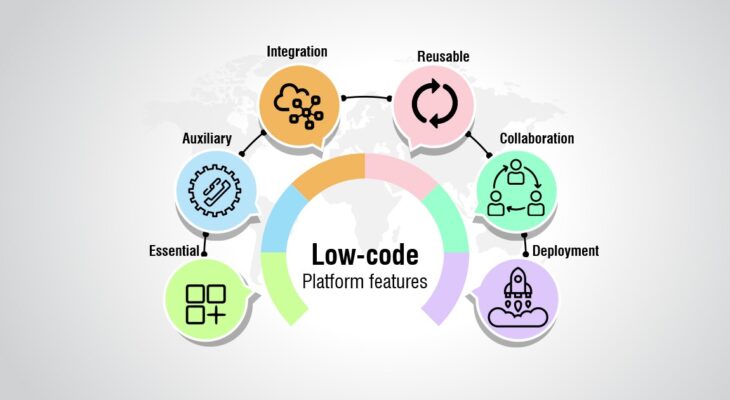Implementing a low code platform will democratize software development, simplify deployment for speed and scale, and allow non-technical users to build complex applications without coding experience. Choosing a low-code platform should include representatives from IT and business departments. The goal is to understand what a platform can do for your organization. If you are still unsure, consider reviewing these five reasons to invest in low-code software.
It democratizes software development
By removing the barriers that prevent employees from developing and maintaining software, low-code platforms democratize the process of creating and deploying software. These tools can help organizations streamline processes, connect disparate systems, and increase transparency and collaboration. With the right technology, organizations can easily democratize the process and build a software development infrastructure without hiring developers and data engineers. A low-code platform can even connect otherwise unconnected data silos.
The emergence of low-code platforms has paralleled the evolution of other business technology landscapes. Power is shifting from internal IT to business teams. Instead of waiting months to provision a server, teams can use their credit card to access cloud services and experiment with new software. The demand for these solutions is growing. But what does this mean for developers? What are the risks? And how can you take advantage of this new paradigm?
The benefits of a low-code platform can’t be understated. A business user doesn’t want to wait for an IT department to develop functionality that would benefit their organization. By enabling the business User to participate in the development process, low-code platforms open the door to better collaboration and faster innovation. The platform will change how business users and IT departments do business. It will also change the market dynamics of professional services.
It simplifies deployment for speed and scale
A Low Code Platform provides flexibility, independence, and compatibility. Its modular architecture enables developers to define user roles and permissions while simplifying deployment for speed and scale. Low Code Platforms make the application development process transparent and easy to use so that teams can focus on their core business goals. This article will examine the various benefits of a Low Code Platform. This article will explore the benefits of a Low Code Platform for software development and deployment.
Low-code platforms can be used by software engineers and citizen developers who are not programmers. Its workflow tools enable the creation of business logic and integration with REST services in a simple way. However, complex logic is not as easy to implement, so professional developers are needed. Drag-and-drop editors allow for the visual insertion of predefined functions. In addition, it supports the graphical modeling environment, making it easier for developers to create and deploy complex applications.
Development time and cost are key factors in the success of a Low Code Platform. Software development is too slow to handle today’s digitized marketplace’s increasingly complex customer requirements. Companies have become used to getting immediate results and benefits. But as the world becomes more reliant on new technologies, they need to reconsider its position in the market. Low Code Platforms provide a solution to this dilemma. By the end of the next three to five years, the population of no-code developers will increase dramatically, and three-quarters of the Global 2000 will be large-scale high-performance innovators.
It allows non-technical users to create complex applications without coding experience
With a Low Code platform, non-technical users can build complex applications using visual drag and drop. They can also take advantage of built-in automation tools that help speed up development and automate common tasks. Several Low Code platforms are available on the market today, and they all allow non-technical users to create complex applications without coding experience. To learn more about these platforms, read more about their benefits and features.
Low Code Platforms have graphical user interfaces that make them easy to use. In addition, they can marry third-party APIs and components. As a result, non-technical users can rearrange and test their applications’ various components without requiring developers’ assistance. These platforms have gained in popularity because of the scarcity of skilled software developers and the need for faster development projects.
With a Low Code Platform, you can add, connect, and customize your own components and features. The platform will then compile and deploy the code for you. Once your application is complete, it will automatically run tests and generate a report. The process is automatic, and you won’t have to worry about source control. Once you’ve finished developing your application, you can move on to other features.

